[color=hsl(0,0%,0%)]The Volvo EX30 has officially arrived in India, marking the Swedish automaker's entry into the compact luxury electric vehicle (EV) segment, and it makes quite a statement. This is Volvo’s most affordable electric car yet in India, but it doesn’t compromise on performance, safety, or technology - the three pillars the brand is known for globally. Aimed at urban professionals and small families who want a premium electric vehicle without the bulk of larger SUVs, the EX30 proves that a small electric car can still feel premium, practical, and enjoyable to drive.
[color=hsl(0,0%,0%)]During my few hours’ drive behind the wheel, covering city runs and highway stretches, I got a sense of how this compact SUV performs in real-world conditions, and here’s what stood out.
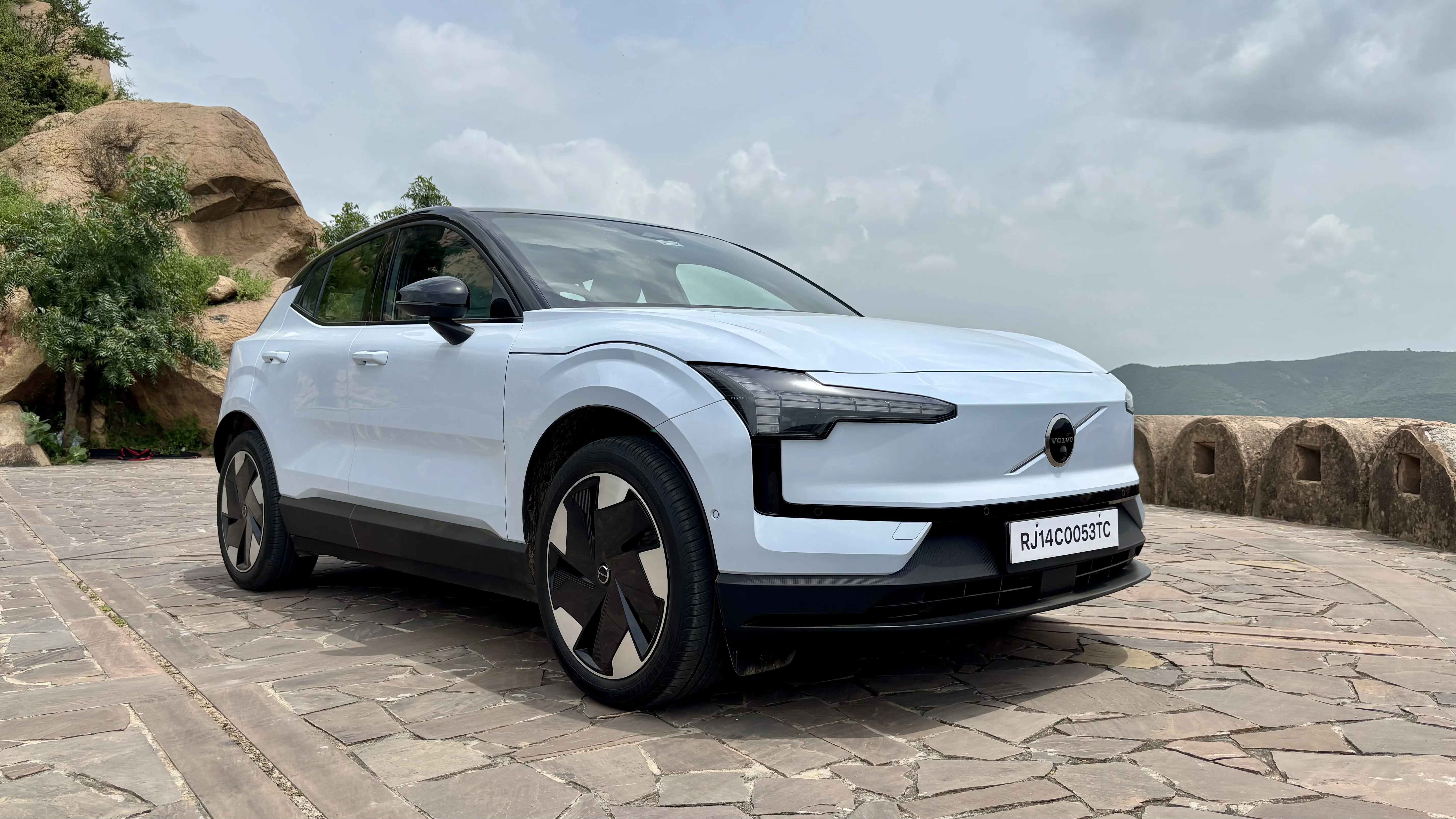
[color=hsl(0,0%,0%)]Design: Minimal & Clean
[color=hsl(0,0%,0%)]At first glance, the EX30 immediately stands out as a Volvo. Its design language is clean and minimalistic, reflecting Scandinavian sensibilities. The front fascia retains Volvo’s signature Thor Hammer (T-shaped) LED headlights with integrated day time running lights (DRLs) and closed front grille that gives the car a confident stance. The roofline tapers gently towards the rear, giving it a sleek profile, while the rear design is minimalistic, featuring vertically stacked split LED tail lights and a subtle roof spoiler.
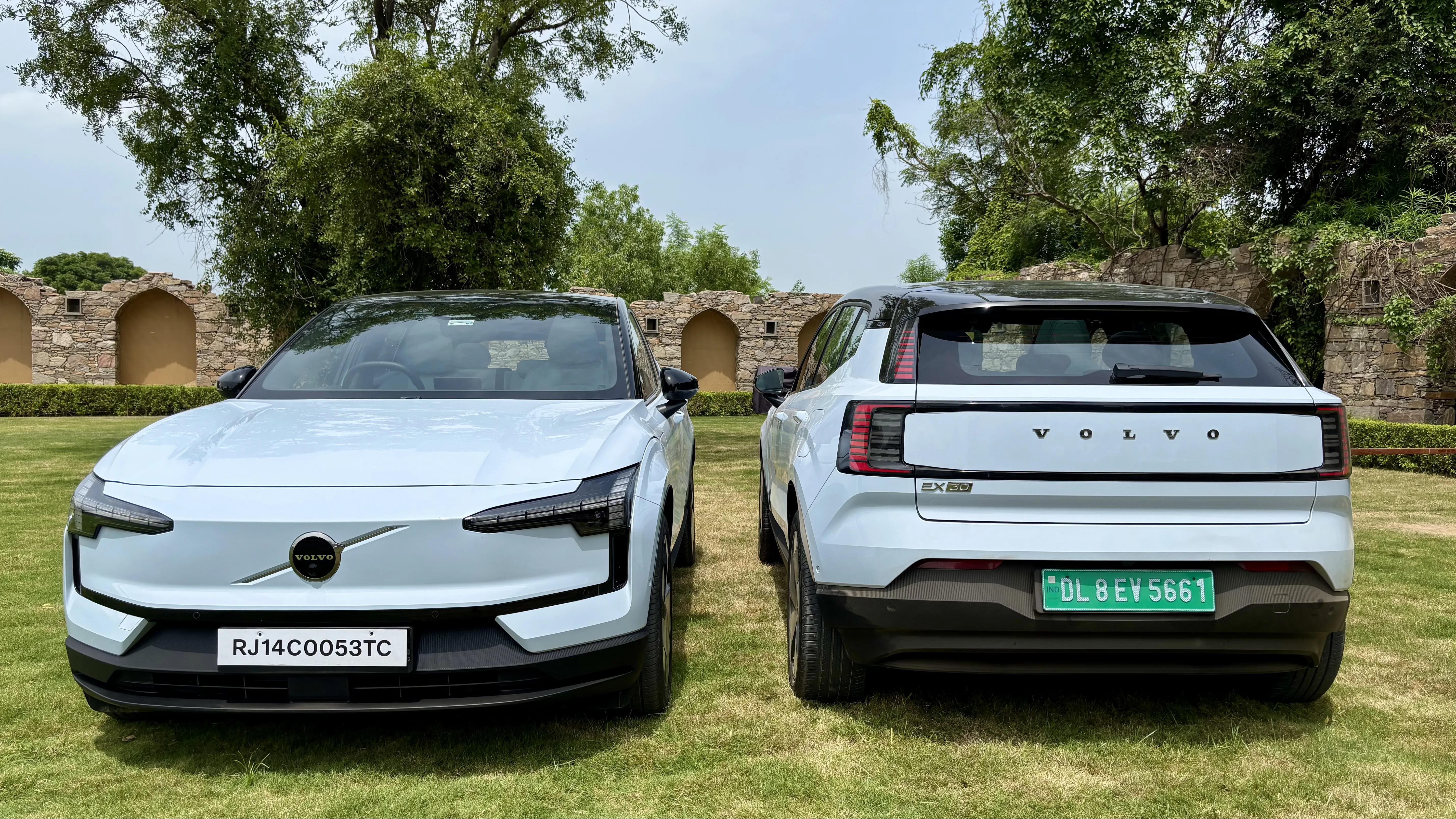
[color=hsl(0,0%,0%)]The car’s proportions are ideal for city driving. At roughly 4.23 meters long, the EX30 is easy to park in tight spaces. The car sits on 19-inch 5-spoke aero alloys wheels fitted with summer tyres, giving it a planted stance without looking oversized. A fixed panoramic sunroof is standard, and the car has a power-operated tailgate.
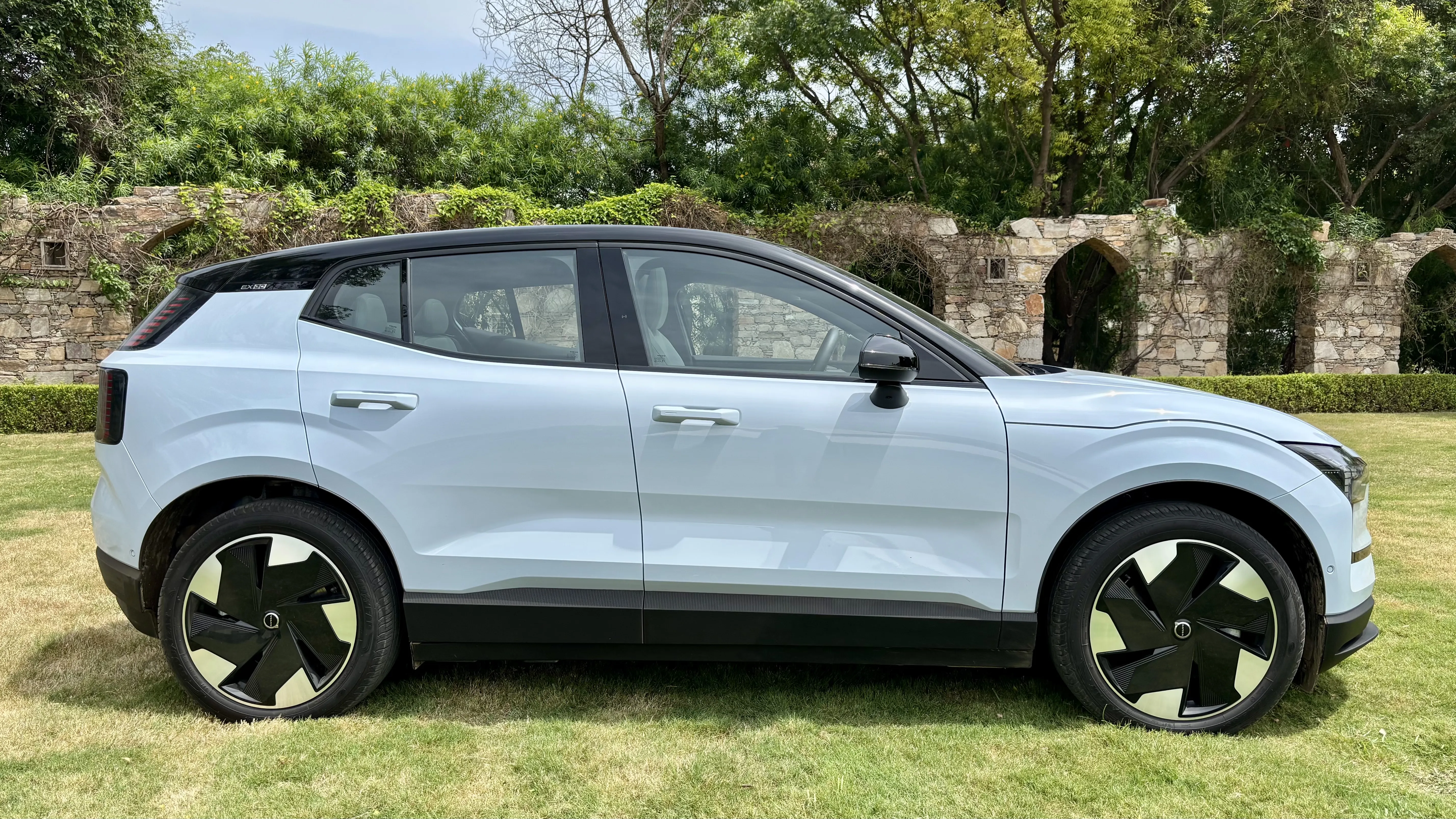
[color=hsl(0,0%,0%)]Overall, the car balances elegance with urban practicality, showing that it can glide through traffic while looking premium at the same time. It will appeal to buyers who prefer understated design over loud styling.
[color=hsl(0,0%,0%)]The company lists five exterior colour options for buyers as Cloud Blue, Vapour Grey, Sand Dune, Onyx Black & Crystal White.
[color=hsl(0,0%,0%)]Interior: Minimalism Meets Comfort
[color=hsl(0,0%,0%)]Stepping inside, the cabin immediately feels different from most compact SUVs. Volvo has embraced its Scandinavian roots, giving the EX30 a clean and uncluttered interior. The dashboard is dominated by a large 12.3-inch vertically mounted touchscreen, which handles infotainment, navigation, climate control, and nearly all vehicle settings.
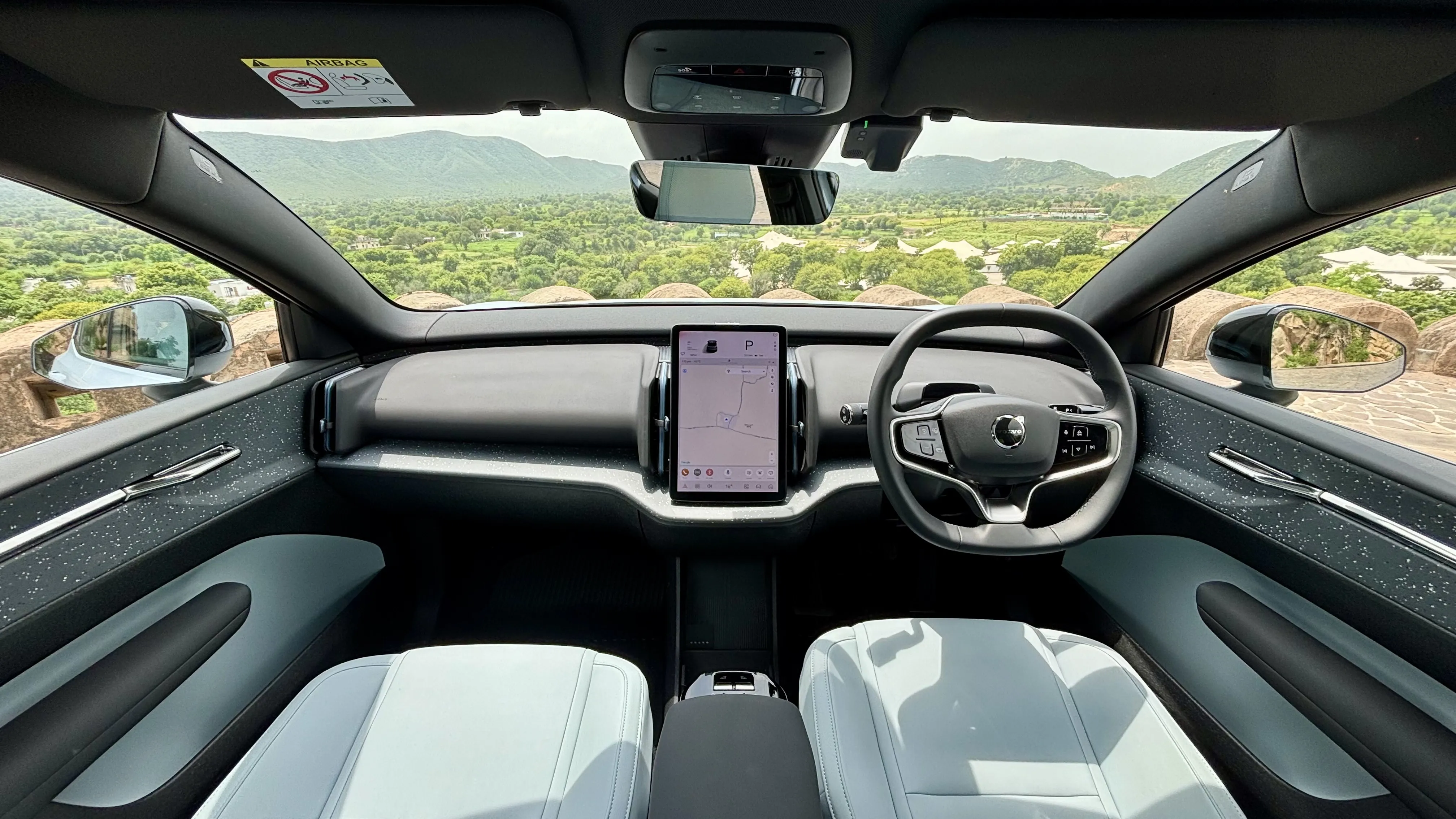 [color=hsl(0,0%,0%)]Powered by Android Automotive OS, the system is responsive, intuitive, and integrates seamlessly with Apple CarPlay and Android Auto. It has 5G connectivity and is capable of Over-The-Air updates. Physical buttons are minimal, limited to essential controls on the steering wheel only. [color=hsl(0,0%,0%)]Powered by Android Automotive OS, the system is responsive, intuitive, and integrates seamlessly with Apple CarPlay and Android Auto. It has 5G connectivity and is capable of Over-The-Air updates. Physical buttons are minimal, limited to essential controls on the steering wheel only.
[color=hsl(0,0%,0%)]Unlike many SUVs, there’s no traditional instrument cluster or heads-up display as well. The central touchscreen doubles as the primary driver display, providing essential information such as speed, battery level, and navigation.
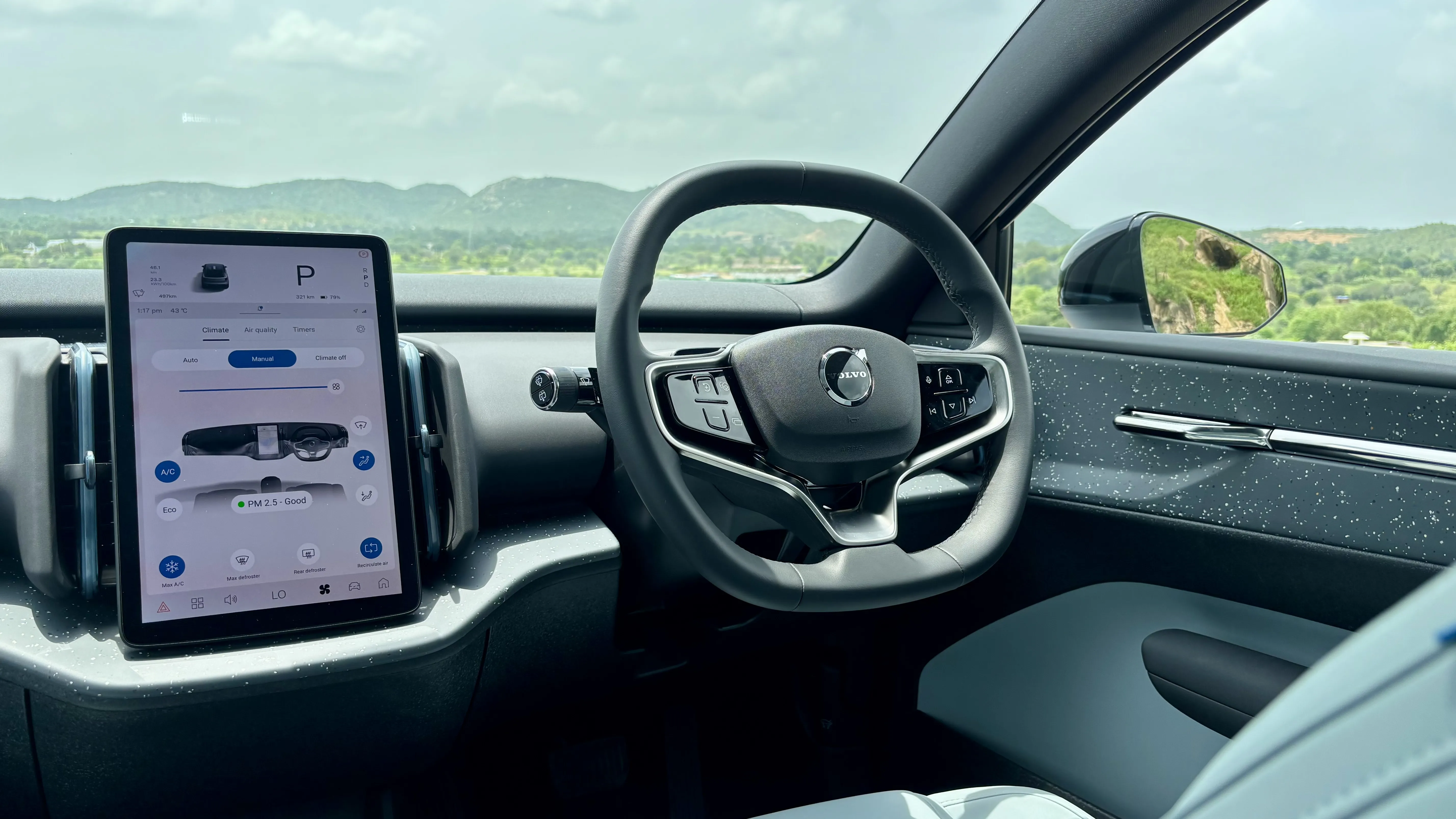
[color=hsl(0,0%,0%)]Seating in the EX30 is comfortable, especially up front. The seats are supportive without being stiff, making it easy to settle in for city commutes or long highway stretches. Rear passengers might feel a bit constrained in terms of legroom if the front seats are pushed back, but for everyday urban use, the space is adequate. Storage solutions are practical, with a decent glovebox, door pockets, cup holders, and a center console that doubles as extra space.

[color=hsl(0,0%,0%)]Volvo has emphasized sustainability in the cabin, with seat fabrics and interior trims made from recycled materials such as denim and PET bottles. The upholstery, labeled Nordico, feels premium, and the front seats are power-adjustable with lumbar support. Rear seats fold 40/60 and the car offers 318 litre of cargo space, complemented by a 7-litre frunk for charging cables and small items. During my time in the EX30, the cabin felt airy and calm, providing a sense of premium comfort.

[color=hsl(0,0%,0%)]Battery, Range & Charging Time
[color=hsl(0,0%,0%)]The India-spec Volvo EX30 I drove is the single motor extended range variant. It’s powered by a rear-mounted electric motor paired with a 69-kWh lithium-ion battery, producing 272 PS and 343 Nm of torque. On paper, it goes from 0 to 100 km/h in 5.3 seconds, with a top speed of 180 km/h.
[color=hsl(0,0%,0%)]Volvo quotes a WLTP-certified range of 480 km for the EX30. While a few hours of driving aren’t enough to fully test this, WLTP figures are useful for comparison. In real-world city driving with moderate speeds, the car should comfortably cover most daily commutes, delivering roughly 400 km of range.
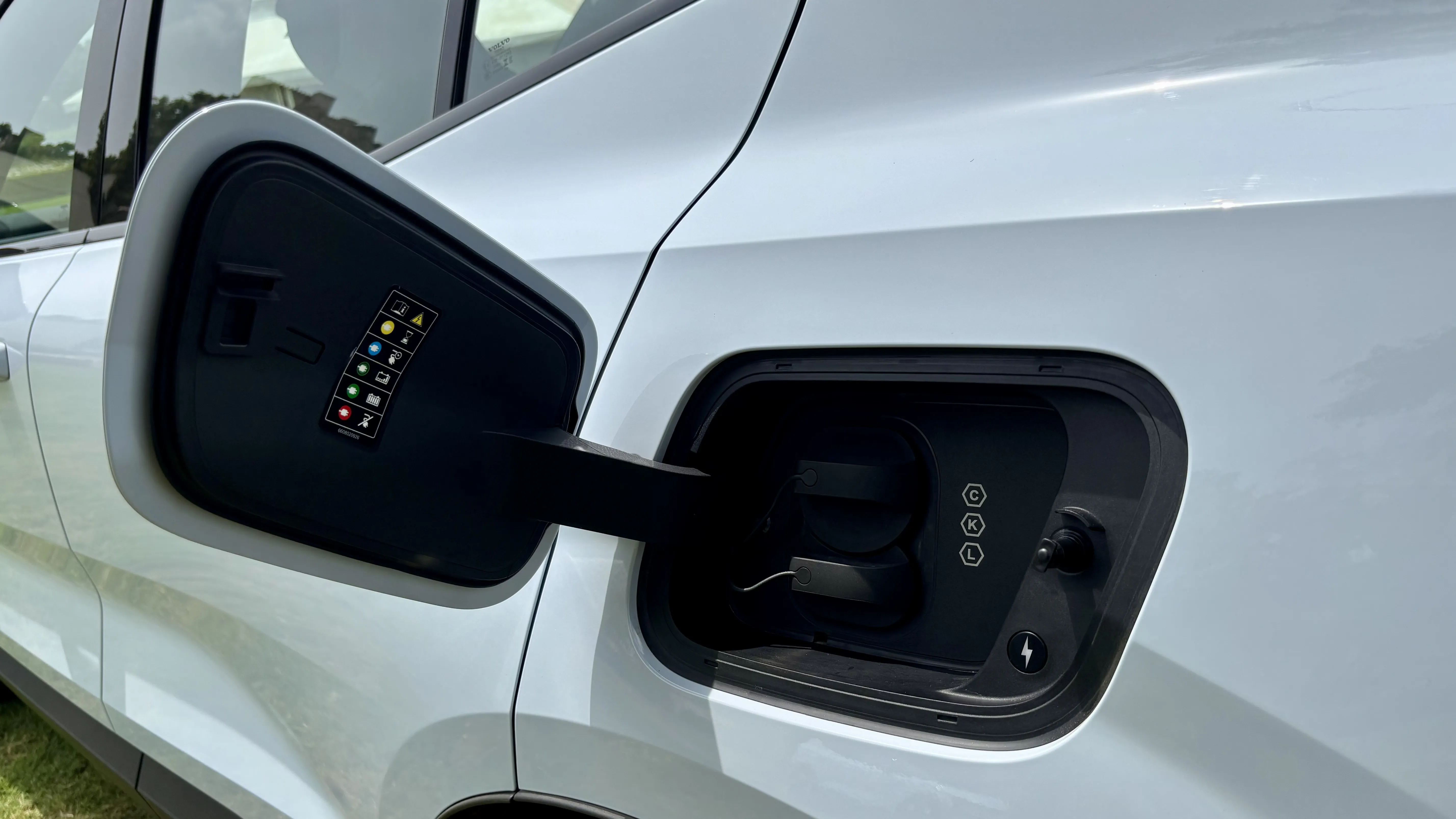 [color=hsl(0,0%,0%)]When it comes to charging, the EX30 supports DC fast charging at up to 153 kW, topping up from 10 to 80 per cent in around 26.5 minutes. For home use, the 11 kW AC wallbox supplied with the car can fully charge the battery in about 7 hours. Additionally, the EX30 comes with an 8-year/160,000 km battery warranty, a 3-year vehicle warranty, a complimentary 3-year Volvo Service Package, and 3-years of roadside assistance. These practical details matter more than headline range, as they directly impact daily usability. [color=hsl(0,0%,0%)]When it comes to charging, the EX30 supports DC fast charging at up to 153 kW, topping up from 10 to 80 per cent in around 26.5 minutes. For home use, the 11 kW AC wallbox supplied with the car can fully charge the battery in about 7 hours. Additionally, the EX30 comes with an 8-year/160,000 km battery warranty, a 3-year vehicle warranty, a complimentary 3-year Volvo Service Package, and 3-years of roadside assistance. These practical details matter more than headline range, as they directly impact daily usability.
[color=hsl(0,0%,0%)]Technology
[color=hsl(0,0%,0%)]What’s interesting is that the Volvo EX30 does not come with a traditional physical key. Instead, it uses an NFC card which is used to unlock, start, and drive the car. The SUV also offers wireless (inductive) phone charging and Volvo’s Digital Key Plus, which turns your phone into a key while still supporting the NFC card option.
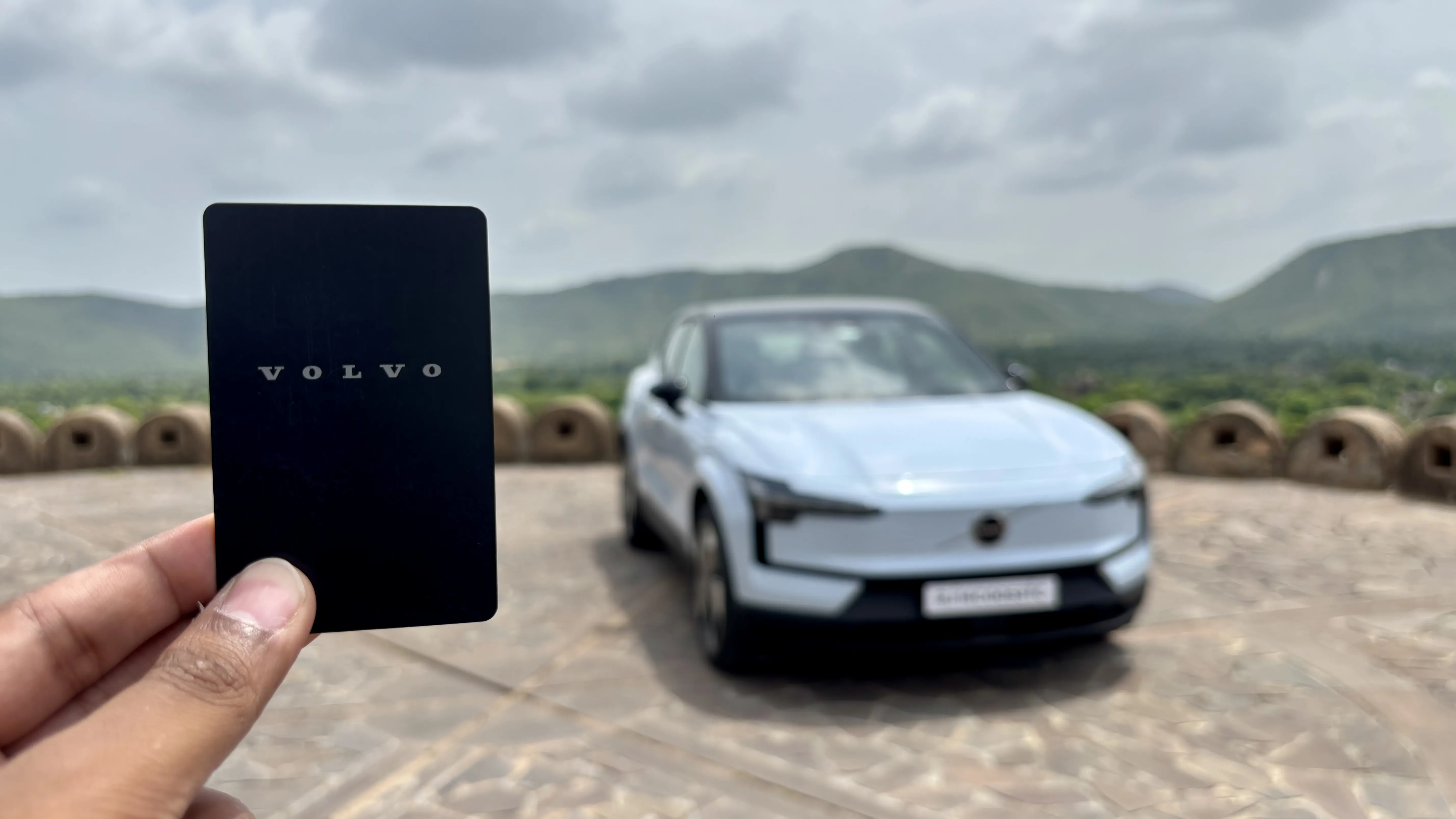
[color=hsl(0,0%,0%)]The cabin features five ambient lighting themes and a Harman Kardon soundbar-style audio system with a 1040W amplifier and 9 speakers. The infotainment setup is comprehensive, but the large touchscreen remains the main control interface, which some users may find slower to operate for quick adjustments compared with traditional physical controls.
[color=hsl(0,0%,0%)]Key Specifications of the Volvo EX30
[color=hsl(0,0%,0%)]• Power & Torque: Delivers 272 hp and 343 Nm of Torque
[color=hsl(0,0%,0%)]• Acceleration: 0-100 km/h in 5.3 second
[color=hsl(0,0%,0%)]• Top Speed: 180 km/h
[color=hsl(0,0%,0%)]• Battery: 69-kWh Lithium-Ion Battery
[color=hsl(0,0%,0%)]• Driving Range: Up to 480 km (WLTP-certified)
[color=hsl(0,0%,0%)]• Charging Time: DC fast-charging up to 153 kW, 10 - 80 per cent in approx. 27 minutes
[color=hsl(0,0%,0%)]• Battery Warranty: 8 years/160,000 km
[color=hsl(0,0%,0%)]• Drivetrain: Rear Wheel Drive (RWD)
[color=hsl(0,0%,0%)]• Storage: 7 litre Frunk Storage & 318 litre Rear Boot Space
[color=hsl(0,0%,0%)]• Infotainment: 12.3-inch Centre Console Touchscreen Display
[color=hsl(0,0%,0%)]How Does It Drive?
[color=hsl(0,0%,0%)]Experiencing the EX30 firsthand feels like a well-engineered compact EV. Even during a short city drive, the instant torque makes stop-and-go traffic effortless, and overtaking feels smooth and confident. The rear-wheel-drive setup adds a subtle sense of engagement. Though it’s not a sports car, but it does feel more dynamic than most small urban electric cars I have tried, particularly when taking tight corners or merging onto faster roads. The suspension is well-tuned too, striking a good balance between comfort and control by soaking up bumps and potholes without making the ride harsh which is important on Indian roads.
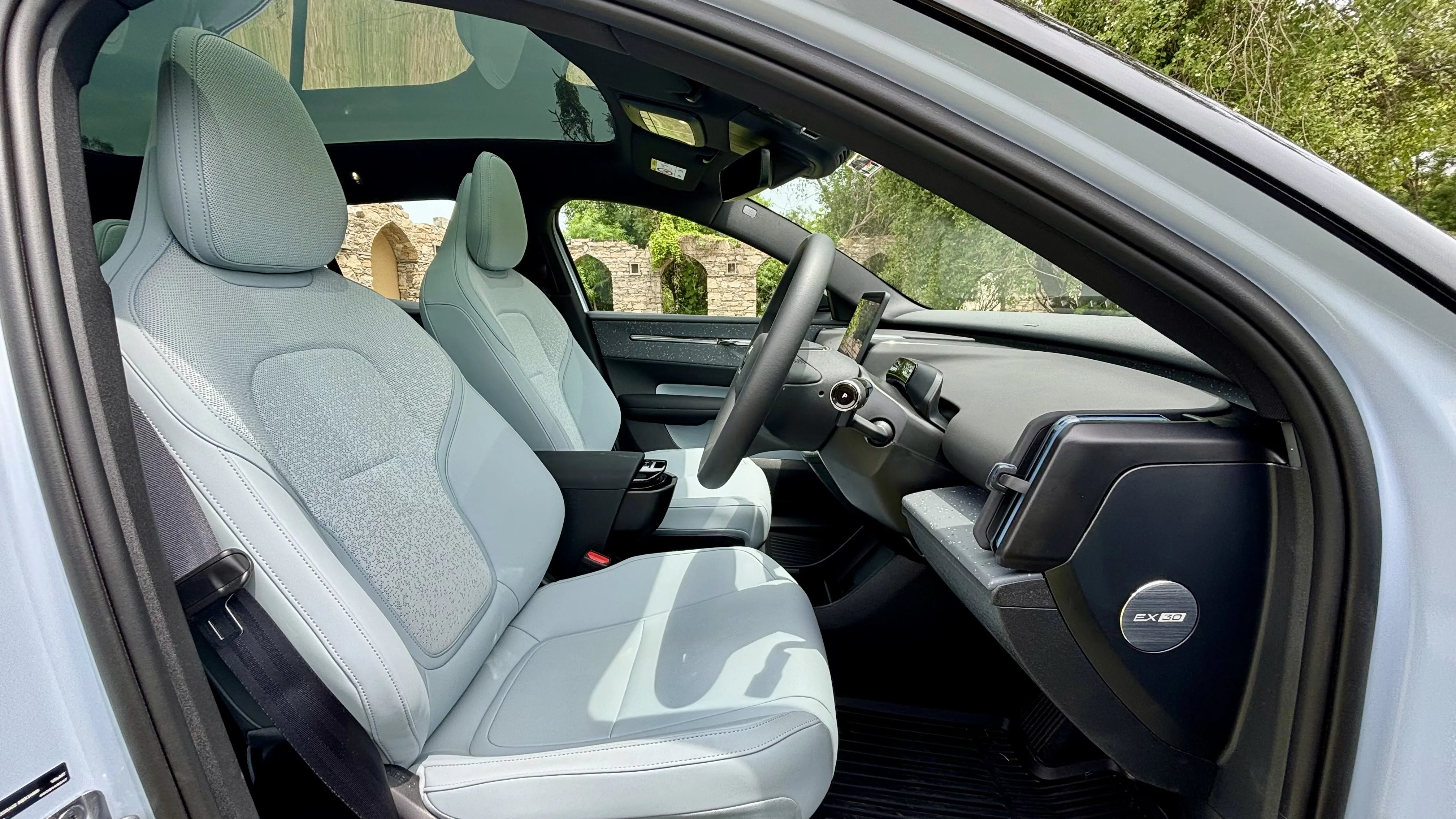
[color=hsl(0,0%,0%)]Out on a short highway stretch, acceleration remained effortless and the car felt planted even at higher speeds. The regenerative braking is strong and effective, though it takes a little time to get used to the ‘one-pedal’ driving feel. In heavy traffic, the EX30 is easy to live with. The steering is light, and the car is compact enough to weave through tight spaces. One-pedal drive works well here once you get used to it.
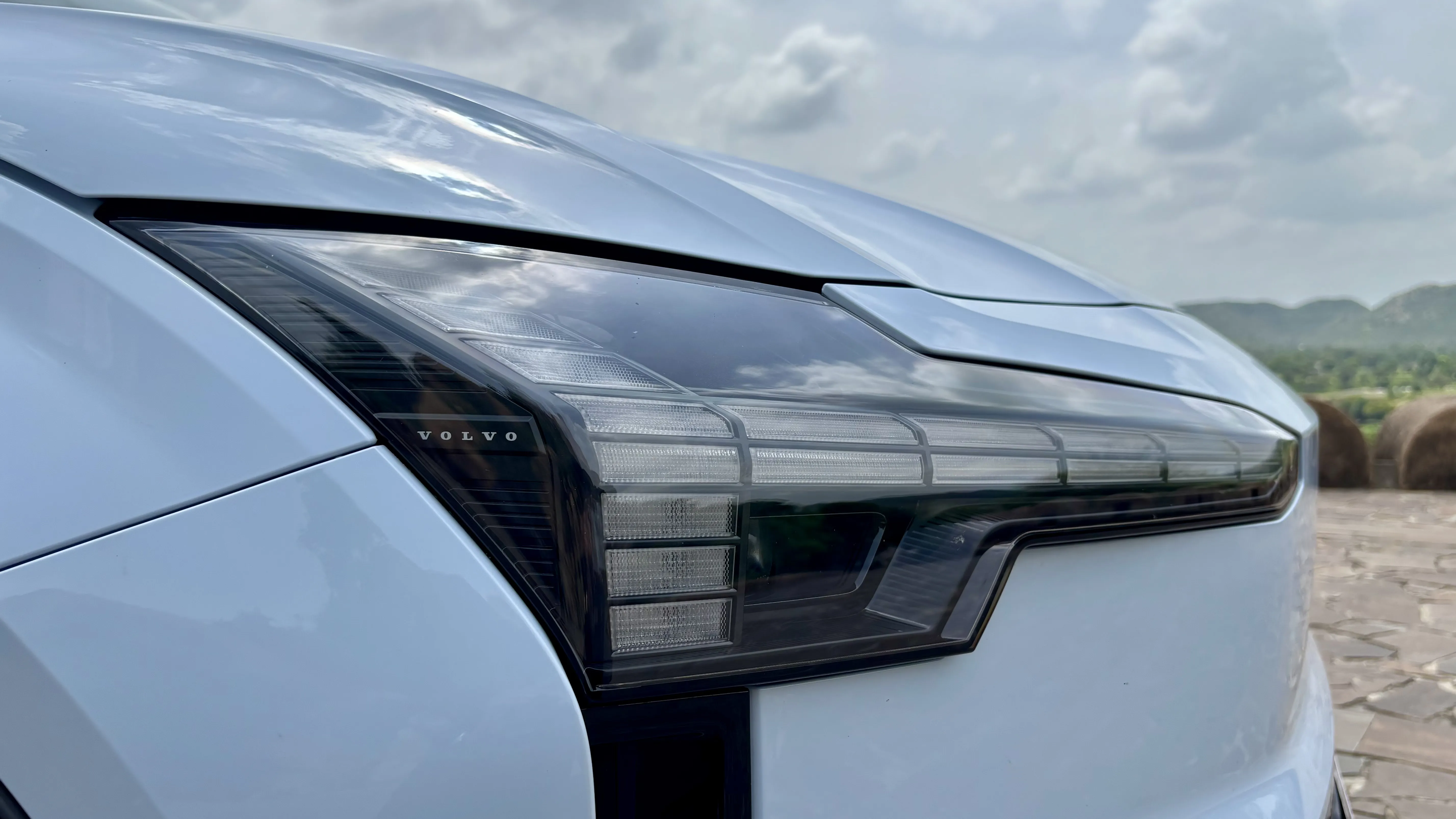
[color=hsl(0,0%,0%)]During my brief drive, it became evident that the EX30 is more than just a small electric SUV; it is a well-thought-out urban companion. Its compact size makes it nimble, its instant torque keeps it lively, and its cabin feels comfortable and elegant. Combined with advanced tech, strong safety features, and sustainable materials, the EX30 feels like a complete package, especially for buyers stepping into the luxury EV space for the first time.
[color=hsl(0,0%,0%)]Safety
[color=hsl(0,0%,0%)]Volvo’s reputation for safety continues with the EX30, which comes equipped with Volvo’s Safe Space Technology. This system combines five cameras, five radars, and 12 ultrasonic sensors to keep an eye on the surroundings. The car offers a suite of active safety aids, including Auto Emergency Braking with pedestrian and cyclist detection, Intersection Autobrake, Oncoming Lane Mitigation, Rear Cross Traffic Alert with autobrake, Lane Keeping Aid, Adaptive Cruise Control, and Park Pilot Assist with a 360° camera.
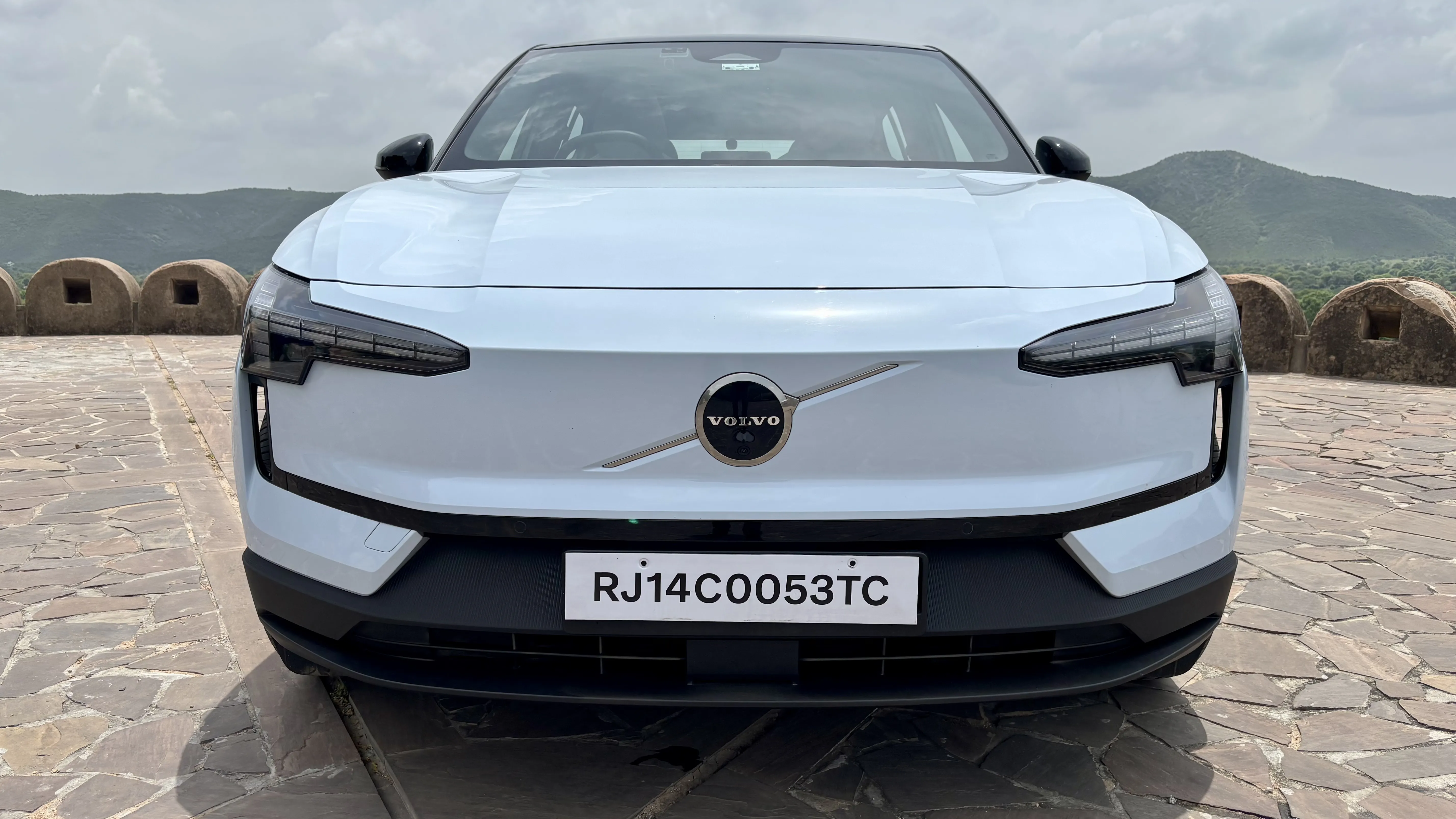
[color=hsl(0,0%,0%)]On the road, these systems feel intuitive and helpful without being intrusive. The EX30 also includes thoughtful touches like a door-opening alert to reduce the risk of ‘dooring’ a cyclist.
[color=hsl(0,0%,0%)]Price
[color=hsl(0,0%,0%)]The EX30 is locally assembled (CKD) at Volvo’s plant in Hosakote, Bengaluru and the company has set an introductory ex-showroom price of Rs 41,00,000. Volvo is also offering a limited pre-reserve price of Rs 39,99,000 for bookings made before 19 October 2025, and deliveries are expected to begin in the first week of November 2025.
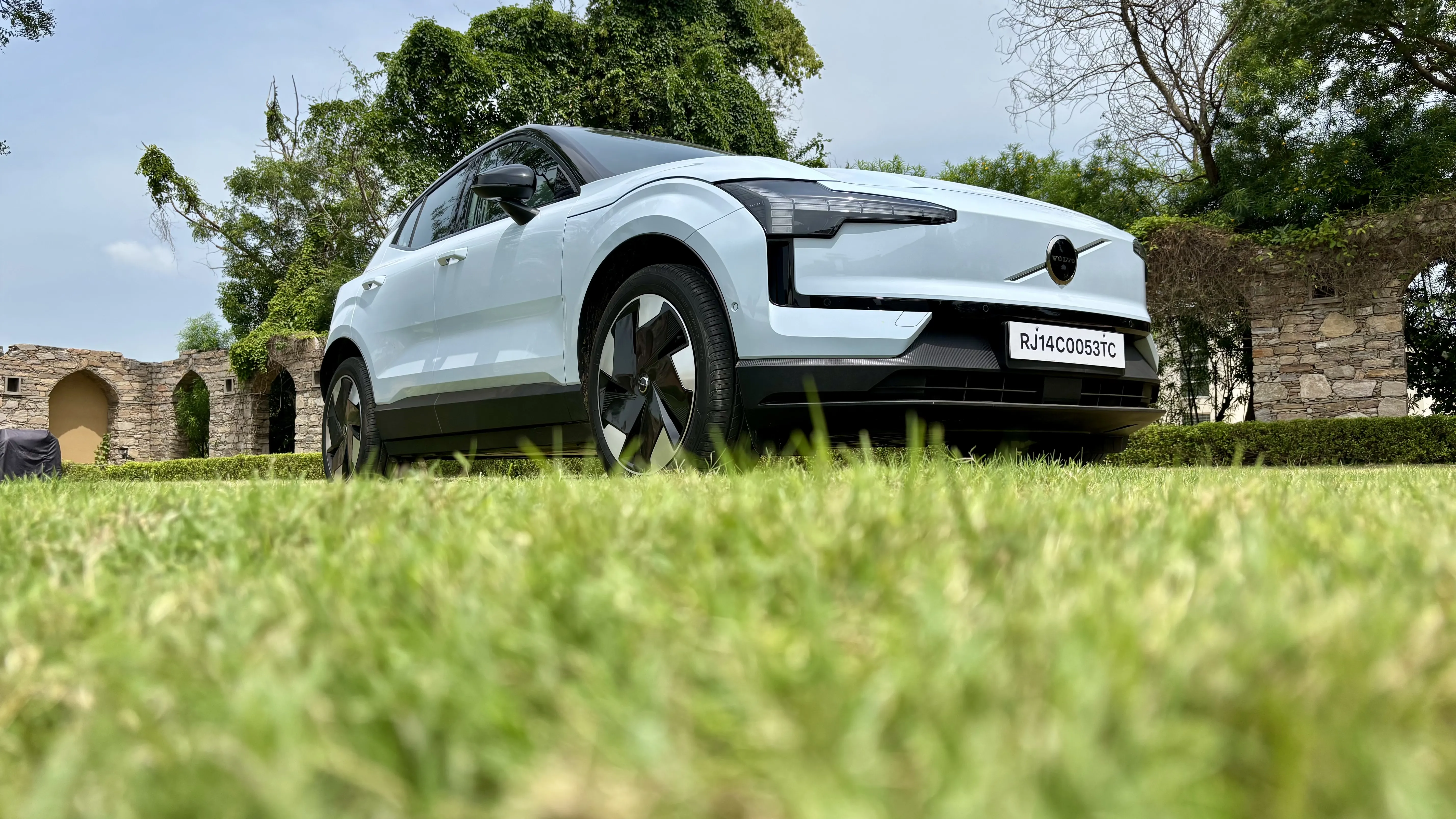
[color=hsl(0,0%,0%)]First Drive Verdict
[color=hsl(0,0%,0%)]The Volvo EX30 makes a strong first impression in India. It’s a car that doesn’t overwhelm with size yet still delivers a premium electric experience. The design is contemporary without being flashy, the cabin is calm and well-finished, the driving experience is engaging, and the technology is intuitive. It is practical for daily use, reasonably quick, and comes with a strong safety list.
 [color=hsl(0,0%,0%)]That said, the car is not without trade-offs. Rear seat space is limited for taller passengers, and the heavy reliance on the central touchscreen for most functions can be inconvenient in traffic or when quick adjustments are needed. Though, the price is competitive for a premium EV, offering Volvo’s signature safety features and build quality in a compact electric package. [color=hsl(0,0%,0%)]That said, the car is not without trade-offs. Rear seat space is limited for taller passengers, and the heavy reliance on the central touchscreen for most functions can be inconvenient in traffic or when quick adjustments are needed. Though, the price is competitive for a premium EV, offering Volvo’s signature safety features and build quality in a compact electric package.
[color=hsl(0,0%,0%)]For those planning to switch to electric mobility in India while still wanting a premium experience, the EX30 is worth serious consideration. It suits professionals and families who prioritise in-car technology, a comfortable front cabin and a car that is easy to park.
[color=hsl(0,0%,0%)]Pros:
[color=hsl(0,0%,0%)]• Compact & Stylish Design
[color=hsl(0,0%,0%)]• Impressive Performance with Quick Acceleration
[color=hsl(0,0%,0%)]• Practical WLTP-Claimed Range of 480 Km
[color=hsl(0,0%,0%)]• Sustainable & High-Quality Interior Materials
[color=hsl(0,0%,0%)]• Semi-Autonomous Driving & Advanced Self-Parking Function
[color=hsl(0,0%,0%)]Cons:
[color=hsl(0,0%,0%)]• Rear-Seat Space is Limited for Taller Passengers
[color=hsl(0,0%,0%)]• Absence of Physical Buttons May Take Time to Get Used to |